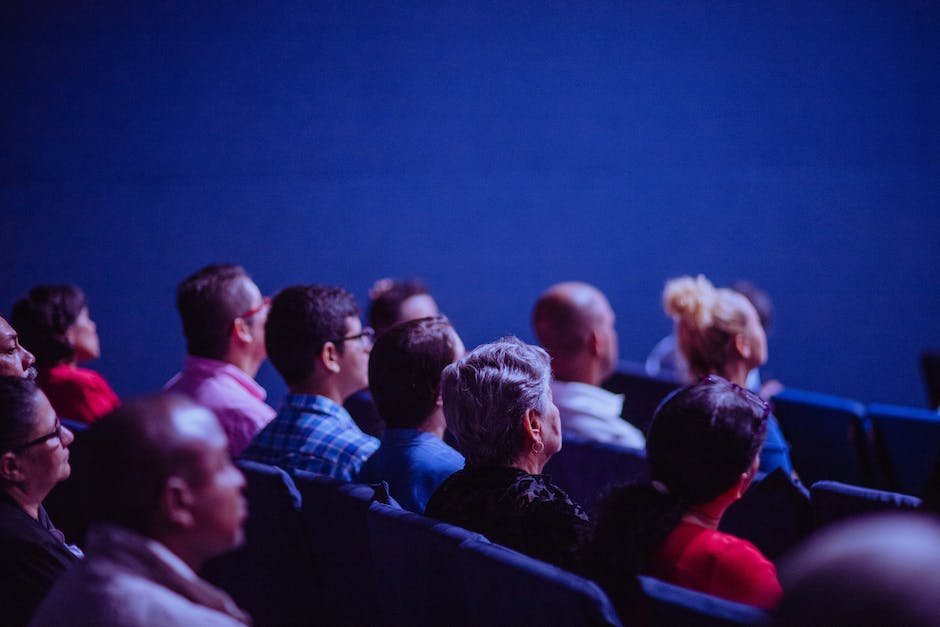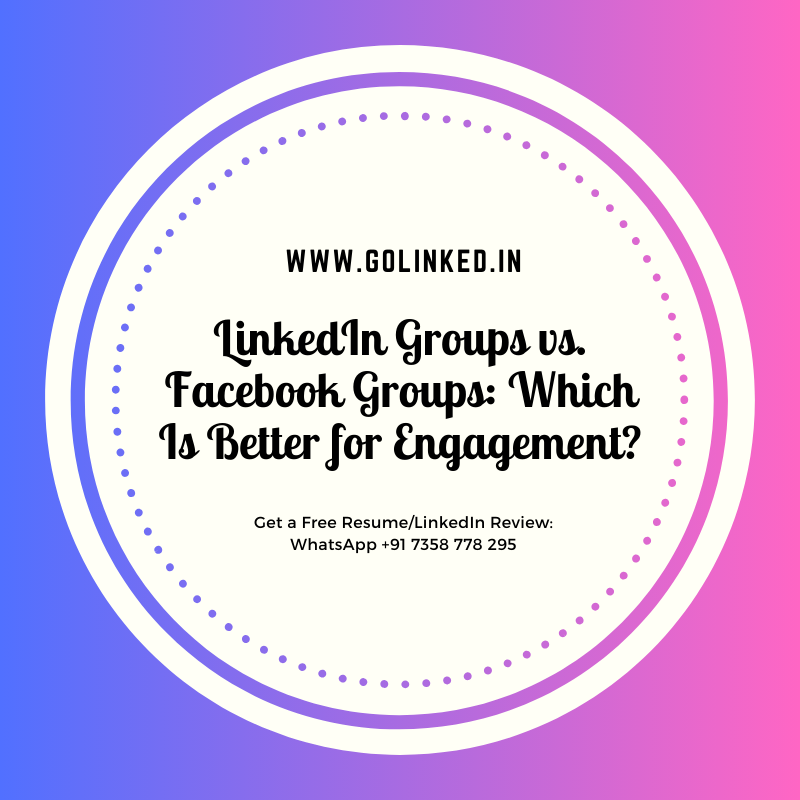LinkedIn Live vs. Traditional Webinars: Weighing the Pros and Cons
Introduction
LinkedIn Live and traditional webinars are both popular methods for hosting live online events. However, they have distinct differences in terms of features and benefits. In this article, we will explore the pros and cons of LinkedIn Live and traditional webinars, helping you understand which option may be more suitable for your specific needs.
Benefits of LinkedIn Live for Engaging with a Wider Audience
LinkedIn Live vs. Traditional Webinars: Pros and Cons
Benefits of LinkedIn Live for Engaging with a Wider Audience
In today’s digital age, businesses are constantly seeking new ways to engage with their audience and expand their reach. One platform that has gained significant popularity in recent years is LinkedIn Live. This live streaming feature allows businesses to connect with their audience in real-time, providing a unique and interactive experience. In this article, we will explore the benefits of LinkedIn Live for engaging with a wider audience.
First and foremost, LinkedIn Live offers businesses the opportunity to reach a larger and more diverse audience. With over 700 million users worldwide, LinkedIn is a hub for professionals from various industries. By utilizing LinkedIn Live, businesses can tap into this vast network and connect with individuals who may not have been reached through traditional webinars. This wider audience allows for increased brand exposure and the potential to attract new customers or clients.
Furthermore, LinkedIn Live provides a more authentic and personal connection with the audience. Unlike traditional webinars, which can often feel scripted and rehearsed, LinkedIn Live allows for real-time interaction and engagement. This authenticity helps to build trust and credibility with the audience, as they can see the human side of the business. By showcasing the expertise and personality of the individuals behind the brand, businesses can establish a stronger connection with their audience, leading to increased engagement and loyalty.
Another benefit of LinkedIn Live is the ability to leverage the power of social media. When a business goes live on LinkedIn, it can be shared and promoted across various social media platforms, such as Twitter and Facebook. This amplification of the live stream can significantly increase the reach and visibility of the content, attracting a wider audience. Additionally, LinkedIn Live allows viewers to comment and engage with the live stream, creating a sense of community and fostering conversations around the topic at hand.
LinkedIn Live also offers businesses the opportunity to repurpose the content for future use. Once the live stream has ended, it can be saved and shared as on-demand content. This allows individuals who may have missed the live stream to still access the valuable information and insights shared. Repurposing the content also extends the lifespan of the live stream, ensuring that it continues to generate value long after the initial broadcast.
Lastly, LinkedIn Live provides businesses with valuable analytics and insights. The platform offers metrics such as viewer count, engagement rate, and viewer demographics, allowing businesses to measure the success of their live streams and make data-driven decisions for future broadcasts. This data can help businesses understand their audience better, tailor their content to their preferences, and ultimately improve their engagement and reach.
In conclusion, LinkedIn Live offers numerous benefits for engaging with a wider audience. From reaching a larger and more diverse audience to fostering authentic connections and leveraging the power of social media, businesses can significantly expand their reach and impact through this live streaming feature. Additionally, the ability to repurpose content and gain valuable insights further enhances the value of LinkedIn Live. As businesses continue to adapt to the ever
Drawbacks of LinkedIn Live in Comparison to Traditional Webinars
LinkedIn Live has gained popularity as a platform for hosting live video content, but it’s important to consider the drawbacks of using this platform in comparison to traditional webinars. While LinkedIn Live offers some unique features and benefits, it also has its limitations that may make traditional webinars a more suitable choice for certain situations.
One of the main drawbacks of LinkedIn Live is its limited audience reach. Unlike traditional webinars that can be accessed by anyone with an internet connection, LinkedIn Live is only available to LinkedIn users. This means that if you’re looking to reach a wider audience or target a specific demographic that may not be active on LinkedIn, you may find yourself at a disadvantage. Traditional webinars, on the other hand, can be promoted and accessed through various channels, allowing you to reach a larger and more diverse audience.
Another drawback of LinkedIn Live is the lack of customization options. While the platform does offer some basic branding options, it falls short when it comes to creating a fully customized and branded experience for your audience. Traditional webinars, on the other hand, allow you to fully customize the registration page, the webinar interface, and even the post-webinar follow-up emails. This level of customization can help you create a more cohesive and professional brand image, which may be important for certain businesses or industries.
LinkedIn Live also lacks some of the interactive features that are commonly found in traditional webinars. For example, LinkedIn Live does not offer features like polls, surveys, or Q&A sessions, which can be valuable for engaging your audience and gathering feedback. These interactive elements not only make the webinar more engaging for participants but also provide valuable insights for the host. If interactivity is a key component of your webinar strategy, then traditional webinars may be a better choice.
Furthermore, LinkedIn Live does not offer the same level of analytics and reporting as traditional webinars. While LinkedIn Live does provide some basic metrics like the number of viewers and comments, it lacks the detailed analytics that can help you measure the success of your webinar and make data-driven decisions for future events. Traditional webinar platforms often provide comprehensive analytics that allow you to track attendee engagement, conversion rates, and other important metrics. This data can be invaluable for refining your webinar strategy and improving your overall performance.
Lastly, LinkedIn Live may not be suitable for all types of content. While it can be a great platform for thought leadership, networking, and showcasing company culture, it may not be the best choice for in-depth training sessions or product demonstrations. Traditional webinars offer more flexibility in terms of content format and duration, allowing you to deliver a more comprehensive and structured presentation.
In conclusion, while LinkedIn Live offers some unique features and benefits, it’s important to consider its drawbacks in comparison to traditional webinars. The limited audience reach, lack of customization options, limited interactivity, and analytics, as well as the suitability for certain types of content, are all factors to consider when deciding which platform is best for your webinar needs. Ultimately, the choice between LinkedIn
Advantages and Disadvantages of Traditional Webinars for Lead Generation
Traditional webinars have long been a popular tool for lead generation. They offer businesses the opportunity to connect with potential customers, showcase their expertise, and generate leads. However, like any marketing strategy, traditional webinars have their pros and cons.
One of the biggest advantages of traditional webinars is their ability to reach a large audience. With just a few clicks, businesses can host a webinar that can be accessed by people from all over the world. This means that businesses can connect with potential customers who may not have been able to attend an in-person event. Additionally, traditional webinars allow businesses to collect valuable data about their audience, such as email addresses and job titles, which can be used for future marketing efforts.
Another advantage of traditional webinars is their ability to provide a personalized experience. Unlike pre-recorded videos or blog posts, webinars allow businesses to interact with their audience in real-time. This means that businesses can answer questions, address concerns, and provide additional information as needed. This level of engagement can help build trust and credibility with potential customers, making them more likely to convert into leads.
However, traditional webinars also have their disadvantages. One of the biggest drawbacks is the time and effort required to plan and execute a successful webinar. Businesses must not only create compelling content but also promote the webinar, manage registrations, and ensure that the technology is working smoothly. This can be a significant investment of time and resources, especially for small businesses with limited staff.
Another disadvantage of traditional webinars is their limited shelf life. Once a webinar is over, it can be difficult to continue generating leads from that content. While businesses can repurpose the webinar recording or create blog posts based on the content, the initial excitement and engagement of the live event are lost. This means that businesses must constantly create new webinars to continue generating leads, which can be a challenge.
In recent years, LinkedIn Live has emerged as an alternative to traditional webinars. This live streaming feature allows businesses to broadcast video content directly to their LinkedIn connections and followers. LinkedIn Live offers several advantages over traditional webinars, including its built-in audience. By broadcasting on LinkedIn, businesses can reach a targeted audience of professionals who are already interested in their industry or niche.
Additionally, LinkedIn Live offers the advantage of convenience. Businesses can easily go live from their office or any location with an internet connection, eliminating the need for expensive equipment or dedicated webinar software. This makes it easier for businesses to host regular live events and engage with their audience on a more frequent basis.
However, LinkedIn Live also has its disadvantages. One of the biggest drawbacks is its limited functionality compared to traditional webinar platforms. While LinkedIn Live allows for live streaming and basic interaction with viewers, it lacks some of the advanced features that traditional webinar platforms offer, such as polls, surveys, and breakout rooms. This can limit the level of engagement and interactivity that businesses can achieve with their audience.
In conclusion, traditional webinars have long been a popular tool for lead generation,
Q&A
1. What are the pros and cons of LinkedIn Live compared to traditional webinars?
Pros of LinkedIn Live:
– Wider audience reach due to LinkedIn’s large user base.
– Real-time engagement and interaction with viewers through comments and reactions.
– Ability to build personal brand and network with professionals in your industry.
Cons of LinkedIn Live:
– Limited control over the technical aspects of the live stream.
– Lack of advanced features and customization options compared to dedicated webinar platforms.
– Potential for lower video quality and stability issues.
2. How does LinkedIn Live differ from traditional webinars?
LinkedIn Live differs from traditional webinars in the following ways:
– LinkedIn Live is a live streaming feature integrated within the LinkedIn platform, while webinars are typically hosted on dedicated webinar platforms.
– LinkedIn Live focuses on real-time engagement and interaction with viewers, whereas webinars often prioritize delivering structured presentations.
– LinkedIn Live leverages the professional networking aspect of LinkedIn, allowing for increased visibility and networking opportunities.
3. Which platform is better for hosting professional events, LinkedIn Live or traditional webinars?
The choice between LinkedIn Live and traditional webinars depends on specific event goals and audience preferences. LinkedIn Live is beneficial for professionals looking to leverage their LinkedIn network and engage with a wider audience. Traditional webinars offer more control over technical aspects and advanced features, making them suitable for more structured presentations and specific targeting.




